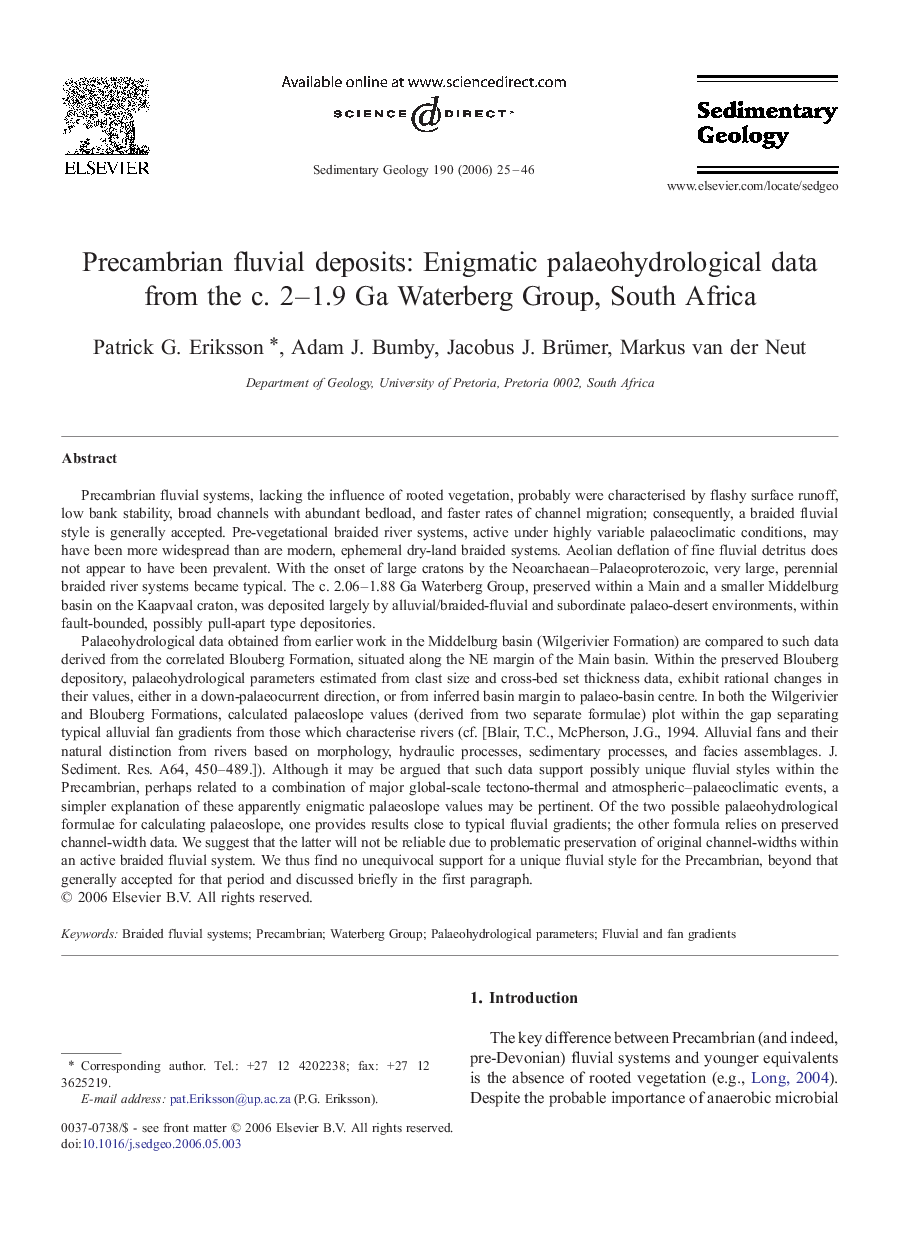| کد مقاله | کد نشریه | سال انتشار | مقاله انگلیسی | نسخه تمام متن |
|---|---|---|---|---|
| 4690966 | 1636183 | 2006 | 22 صفحه PDF | دانلود رایگان |

Precambrian fluvial systems, lacking the influence of rooted vegetation, probably were characterised by flashy surface runoff, low bank stability, broad channels with abundant bedload, and faster rates of channel migration; consequently, a braided fluvial style is generally accepted. Pre-vegetational braided river systems, active under highly variable palaeoclimatic conditions, may have been more widespread than are modern, ephemeral dry-land braided systems. Aeolian deflation of fine fluvial detritus does not appear to have been prevalent. With the onset of large cratons by the Neoarchaean–Palaeoproterozoic, very large, perennial braided river systems became typical. The c. 2.06–1.88 Ga Waterberg Group, preserved within a Main and a smaller Middelburg basin on the Kaapvaal craton, was deposited largely by alluvial/braided-fluvial and subordinate palaeo-desert environments, within fault-bounded, possibly pull-apart type depositories.Palaeohydrological data obtained from earlier work in the Middelburg basin (Wilgerivier Formation) are compared to such data derived from the correlated Blouberg Formation, situated along the NE margin of the Main basin. Within the preserved Blouberg depository, palaeohydrological parameters estimated from clast size and cross-bed set thickness data, exhibit rational changes in their values, either in a down-palaeocurrent direction, or from inferred basin margin to palaeo-basin centre. In both the Wilgerivier and Blouberg Formations, calculated palaeoslope values (derived from two separate formulae) plot within the gap separating typical alluvial fan gradients from those which characterise rivers (cf. [Blair, T.C., McPherson, J.G., 1994. Alluvial fans and their natural distinction from rivers based on morphology, hydraulic processes, sedimentary processes, and facies assemblages. J. Sediment. Res. A64, 450–489.]). Although it may be argued that such data support possibly unique fluvial styles within the Precambrian, perhaps related to a combination of major global-scale tectono-thermal and atmospheric–palaeoclimatic events, a simpler explanation of these apparently enigmatic palaeoslope values may be pertinent. Of the two possible palaeohydrological formulae for calculating palaeoslope, one provides results close to typical fluvial gradients; the other formula relies on preserved channel-width data. We suggest that the latter will not be reliable due to problematic preservation of original channel-widths within an active braided fluvial system. We thus find no unequivocal support for a unique fluvial style for the Precambrian, beyond that generally accepted for that period and discussed briefly in the first paragraph.
Journal: Sedimentary Geology - Volume 190, Issues 1–4, 1 August 2006, Pages 25–46